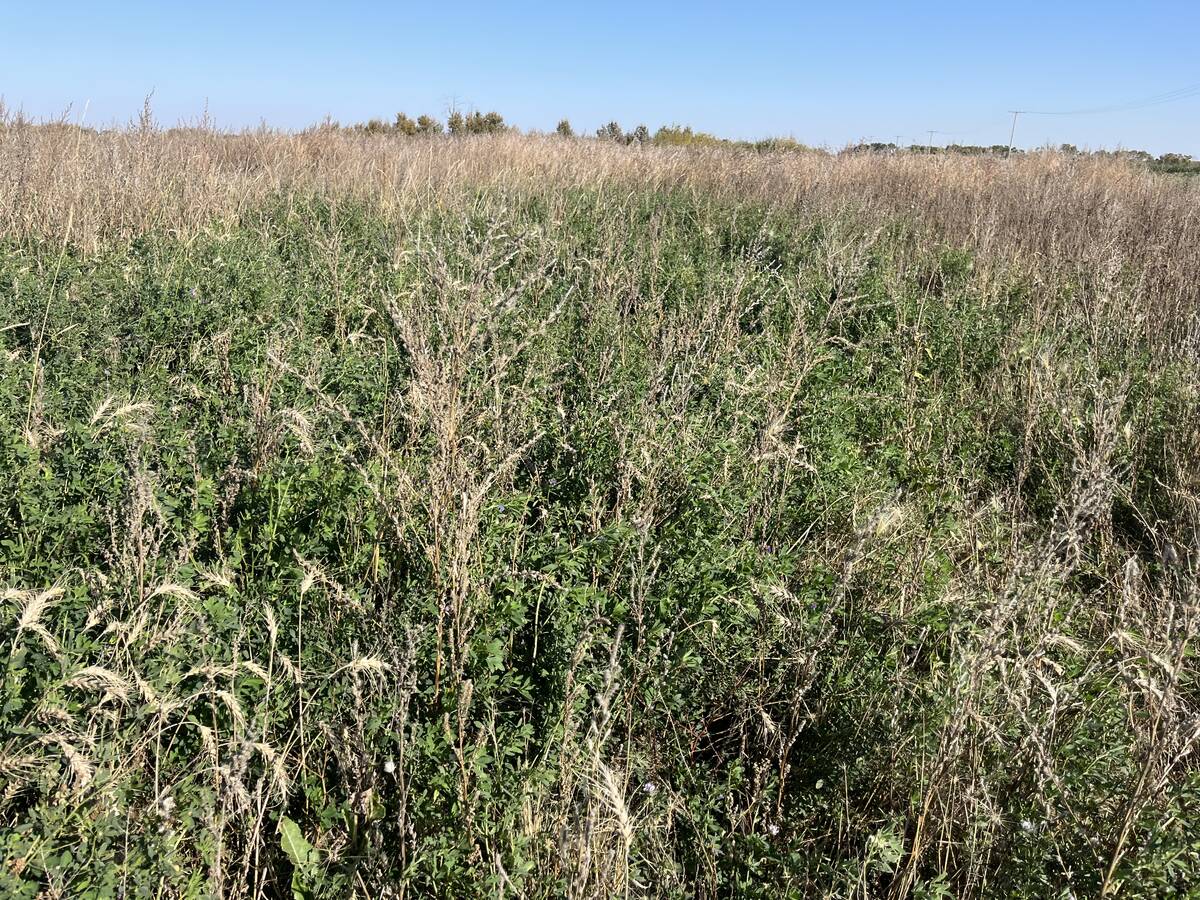Bovine viral diarrhea virus is one of the most important viruses affecting the North American cattle industry.
I have witnessed the wide variety of ways in which this virus can cause devastating economic losses in terms of infertility, abortions, stillbirths and calf deaths. It is not surprising that the disease is an important and vital component of any vaccination strategy in cow-calf herds and feedlots in North America.
The BVD virus has a wide variety of strains with a lot of genetic variation, which are primarily grouped into two genetic categories: Type 1 BVD viruses and Type 2 BVD viruses.
Read Also

Dormant seeding forages frees up farmer time and gets ahead of weeds
Dormant seeding isn’t common practice and can appear daunting, but there are some techniques to give Manitoba farmers an edge
Most vaccines for BVD contain modified viruses from both Type 1 and Type 2 to ensure the broadest possible protection.
A BVD infection in an unvaccinated animal with a competent immune system may initially result in minor clinical symptoms such as diarrhea and a fever.
Some strains of the virus may cause more severe disease, but the symptoms in most cases may be relatively mild and not even noticed except by the observant stockperson.
However, BVD virus can also temporarily suppress an animal’s immune system, which makes it more susceptible to other infections with other bacteria or viruses.
Several large outbreaks of respiratory disease in young beef calves have occurred that were initially caused by being exposed to BVD virus, and the subsequent immune suppression resulted in infections with other viruses that caused pneumonia.
The BVD virus has a unique but somewhat complicated strategy for ensuring its survival and persistence within the cattle population.
An unvaccinated pregnant cow that becomes infected may experience the mild clinical signs of diarrhea and fever and will usually recover. However, the virus targets the fetus in the pregnant cow, and depending on the timing of the infection, will produce a variety of clinical syndromes such as early embryonic death, abortion, congenital defects and persistent infections.
Fetal infection between 40 and 120 days of gestation coincides with the development of the calf’s immune system.
One of the immune system’s first tasks is to recognize the normal tissues and cells of the calf so it will not develop antibodies and attack itself. If BVD virus is present, the calf’s immune system will not recognize the virus as “foreign,” and although the calf may be born completely normal, it will be tolerant to BVD virus, which is called persistently infected.
These persistently infected calves are permanent carriers of the virus. They are often the source of BVD outbreaks and excrete copious quantities of the virus in their saliva and manure.
The calf will not develop immunity to BVD virus but will always be a carrier and shedder. They are sometimes poor doers with stunted growth, but they can also appear completely normal.
Only .3 to .4 percent of calves in North America are persistently infected with BVD virus, but these animals can cause devastating results if they enter a herd and spread the virus among cattle that are not appropriately vaccinated.
A recent scientific study reported in the journal Theriogenology focused on the efficacy of BVD vaccines to prevent reproductive disease.
The authors from the University of Alabama used a statistical technique known as meta-analysis, which attempts to bring together multiple scientific studies on a particular topic and summarize the information to improve the estimate of how effective a drug or vaccine performs.
Meta-analysis studies are one of the strongest forms of scientific evidence because they gather information from a wide variety of studies.
The Alabama conclusions were based on a summary of 46 experiments and trials and showed that BVD vaccines reduced the probability of fetal infections by 85 percent.
BVD vaccines also decreased the abortion rate by nearly 45 percent in these studies and increased the pregnancy rate by five percent.
It should be noted that these latter results are compared to animals that may have been exposed to BVD virus and may not be evident in herds that are practising good biosecurity.
It also should be noted that this study summarized a variety of brands of vaccines and did not focus on one particular vaccine.
It is also important to avoid bringing BVD virus into a herd by buying animals that could potentially be carriers.
A veterinarian can help provide effective means for testing for persistently infected animals through blood tests, or more commonly from ear notches.
Producers should buy replacement stock from sources with good vaccination protocols and avoid buying suckling calves from unknown sources to replace calves that have died.
BVD virus can cause devastating results in an unvaccinated herd, but it is a relatively easy disease to control with appropriate vaccinations.
This study demonstrates that BVD vaccines are highly effective and should be part of all cow-calf vaccination programs.














